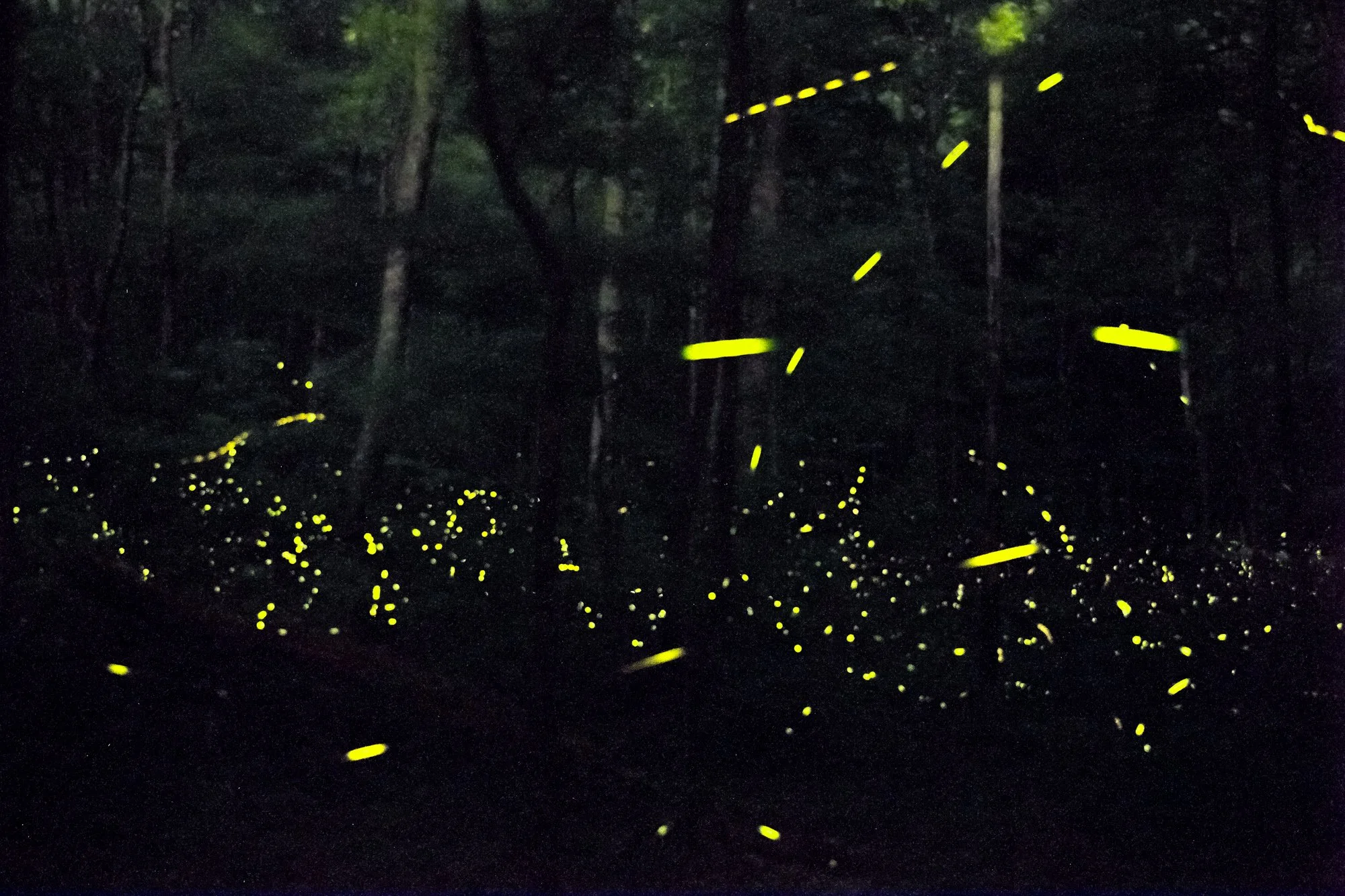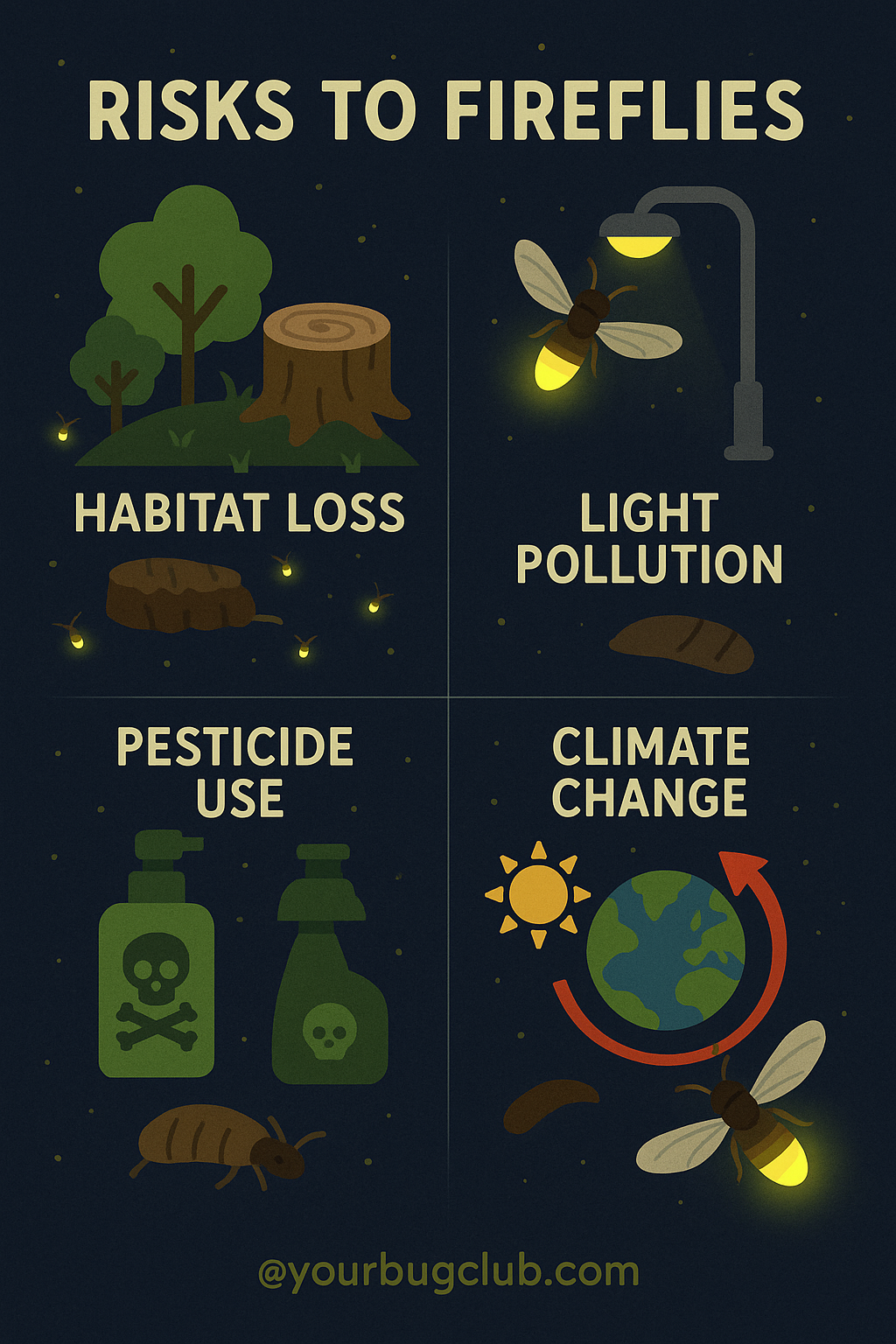6 Ways You Can Protect Fireflies From Extinction
I remember looking forward to summers as a kid, and not just because I was out of school. I knew when summer came, so did the fireflies or as we called them lightning bugs.
Just as the sun went down past the horizon, I waited for the flashes. I sat on my front porch watching as one blink slowly turned into ten, then one hundred. I watched them wander around my yard, until slowly the blinking stopped.
Back then, the blinking stopped because they found a mate, which is the reason they use the flashing. But today, the blinking is stopping because these magical creatures are at risk of being lost completely - taking away real magic from generations of children.
What is a Firefly?
Did you know that a firefly is actually a beetle?! That’s because they have two pairs of wings and the top pair is made of a tougher, leathery layer called elytra. Flies only have two wings and a set of gyroscopes to help them balance.
They are in the Family Lampyridae, not surprisingly since they are like little lamps, and there are at least 2,000 species.
Fireflies spend most of their lives as larvae, often found in leaf litter or underground. As pretty as they are, they have a dark side, the larvae are predatory, feeding on snails, slugs, and other insects. They typically hunt for their prey in moist soil or marshy areas, using their mandibles to inject prey with paralyzing neurotoxins. Once their quarry is immobilized, they secrete digestive enzymes that liquefy the prey before consumption. The majority of their life cycle—lasting one to two years—occurs in the larval stage.
Most fireflies pupate underground or in rotting logs, although some find safe places to pupate in the bark furrows of tree trunks. The adults typically emerge in late spring or early summer.
Adults have a shorter lifespan, typically around two months, and their diet varies; some are predatory, while others feed on pollen or nectar.
How Do Fireflies Light Up?
The science behind this phenomenon is known as bioluminescence, a natural process also seen in certain fungi, fish, shrimp, jellyfish, plankton, salamanders, gnats, glowworm beetles, and more. Firefly flashes are remarkable examples of bioluminescence, producing light through highly efficient chemical reactions that generate light with minimal heat. In their lanterns, a part of their abdomens, fireflies mix the chemical luciferin with oxygen and the enzyme luciferase, resulting in a ‘cool’ glow that boasts nearly 100% light.
Fireflies create light through a chemical reaction in their lanterns, which are specialized organs on their abdomens. This process involves the chemical luciferin, oxygen, and the enzyme luciferase, producing a "cool" light with nearly 100% efficiency.
The enchanting flash of a firefly serves a vital purpose: attracting a mate. Each species of firefly possesses a unique flash pattern that plays a crucial role in their mating display. These distinct light patterns help male and female fireflies of the same species identify one another.
But beware, there’s a special firefly lurking in the weeds. The Photuris firefly mimics other fireflies signals, lures them in, and eats them!
Where Can I Find Fireflies?
Most fireflies occur in tropical regions, but they are also found in arid zones and dry forest during rainy seasons. They are found in every continent except for Antarctica.
The areas in the world with the highest species richness are in Central & South America and Asia encompassing roughly 50% of the worlds firefly diversity.
There are some really special places to see fireflies if you are traveling.
In Florida if you visit one of the many bottomless springs, they are often flying around the springs. Blue Springs State Park holds firefly nights to experience the lights of hundreds of fireflies as they rise from the forest floor in the woods of Blue Spring State Park.
In the Rocky Mountains you can see the spectacular synchronous firefly show. The park manages this high demand viewing opportunity through a lottery to protect the fireflies. Visitors can enter the lottery on Recreation.gov in late April. During the 8-day viewing opportunity, Elkmont is closed at night to all but vehicles with a reservation and foot traffic from registered campers in Elkmont Campground. When the lottery opens, visitors may select two dates within the 8-day viewing opportunity—a preferred choice and an alternate date.
The National Park Service lists out some good advice on viewing etiquette that can apply anywhere:
Firefly tourism sites around the world
Firefly Viewing Etiquette
To ensure you have the best experience, please follow proper viewing etiquette. Flashlights can disrupt the firefly display and impair others’ night vision.
Cover your flashlight with red cellophane or use a flashlight with a red-light filter. Multiple layers of red cellophane may be necessary to dim bright lights.
Use your flashlight (with red cellophane or a filter) only when walking to your viewing spot. If safe, try to navigate without one.
Point your flashlight directly at the ground to minimize disturbance to fireflies and other visitors.
Turn off your flashlight once you reach your viewing location.
You can also help protect fireflies and their habitats:
Don’t catch fireflies. If one lands on you, remain still and allow it to fly away.
Stay on designated trails at all times. Female fireflies reside on the forest floor, and wandering off-trail can crush them.
Keep an eye on your belongings and pack out all food and trash. Remember, this is bear country!
Why are Fireflies at Risk?
It’s estimated that one in three firefly species may be at risk of extinction.
Many species of fireflies tend to be habitat and season specialists, which can limit there range because of their high degree of specialization. This makes habitats they prefer of special importance to protect.
Firefly populations are facing threats such as light pollution, habitat loss, pesticide use, and drought. Yard pesticides combined with the lack of habitat that lawns provide for these insects play a huge role in the decline of fireflies.
Habitat Loss
Fireflies rely on specific habitats like wetlands, streams, and damp fields for breeding and larval development. Urban development, agriculture, and deforestation destroy these vital areas.
Light Pollution
Artificial light disrupts the fireflies' bioluminescent communication, which is crucial for finding mates. This makes it harder for them to reproduce, leading to population declines.
Pesticide Use
Pesticides can directly kill fireflies or contaminate their food sources, impacting their survival and reproductive success.
Climate Change
Changes in temperature, rainfall patterns, and sea levels can affect firefly habitats and their life cycles. Droughts and rising sea levels can reduce suitable breeding grounds and increase mortality rates.
What Can We Do To Save Fireflies?
1. Create Habitat by Planting Native and Reducing Lawn
Turf grass provides very little, if any, habitat for fireflies. Many firefly species depend on moist soil, ample landing spaces in the plants, and even some blooms for nectar and pollen sources. Turf grass struggles to provide these habitat elements. Its shallow roots do little to maintain soil moisture when compared with deep-rooted native plants.
Meanwhile, when turf grass is mown, it is too short to provide much space for the fireflies to land and signal using their blinking patterns to find a mate. Leaving it 4 inches high can help protect fireflies.
Some firefly species even eat nectar and pollen in their adult forms and will need nectar-filled summer blooms which grass does not provide.
Replacing areas of lawn with native plant beds that offer a diversity of species is an excellent way to create the basis of a healthy habitat for fireflies and hundreds of other wildlife species like butterflies, bees, and songbirds.
Pine tree forests offer an ideal firefly habitat because they provide a canopy to help block any artificial light that can disrupt the ability of adult fireflies to mate. The needles on the ground also offer a perfect habitat for firefly larvae.
You can take the steps about and get your lawn certified as firefly habitat by:
Providing undisturbed cover for adults and glowing larvae
Encouraging plant diversity to preserve soil moisture
Reducing Light Pollution
Restricting Pesticide Usage
2. Leave the Leaves and Logs
Have you ever seen a baby firefly? Like many insects, fireflies begin their life looking a bit different from their adult forms. These fireflies have a larval stage in which they’re known as “glowworms”. In this larva stage, many species of fireflies spend their days in the damp layer of leaves and logs on the ground. Using a gas-powered leaf blower to blow away leaves, or even raking leaves, can also destroy firefly larvae.
If all of the leaves are raked and sent away in yard waste bags, the glowworms either lose their habitat or are even carted away as part of the yard waste! Without a good leaf layer, many fireflies will never even make it to adulthood.
Instead of carting away your fallen leaves, use them as a natural mulch in garden beds where they can provide shelter for the glowworms and many other wildlife too, like caterpillars and salamanders!
3. Add in a Water Source
Fireflies thrive in wetter areas. In fact, some of their larval forms even having gills! Adding in a water source like a small pond can go far in attracting many different species of fireflies to your garden. The water source will create a damper environment in the soil and support other insects that become food for the fireflies (did you know that many fireflies are carnivores as larva?).
If you have concerns about mosquitoes, you can simply add a mosquito dunk to the water source, which does not harm the fireflies or other beneficial wildlife that visit!
You can also build a bat house to encourage mosquito-eating predators to frequent your yard; bats don’t typically eat fireflies due to the toxic compounds they contain.
4. Avoid Pesticides
Even if fireflies have everything they need to survive in your garden, it will all be for naught if they become the victims of lawn pesticides. The chemicals that many Americans put on their lawns and gardens impact many more species than they are intended to target. Also avoid adding too much salt to your sidewalk and driveways during winter as this can infiltrate soil and kill the firefly young.
Not only that, but they also often wash off into local waterways where they continue to wreak havoc! Skip the lawn chemicals to help the fireflies and so many other wildlife species. Consider alternative methods like attracting beneficial insects that prey on pests.
Say NO to bug zappers. Blue light insect lures like Dynotrap advertise that they kill beetles. Fireflies are beetles!
5. Reduce Light Pollution
Artificial light sources like landscape and house lights can make this process difficult for fireflies. Opt for turning your outdoor lights off or put them on a motion-detector to limit their impact. Fireflies are less sensitive to red light, so using red bulbs or filters can be an option.
DarkSky.org
6. Get Involved!
We can help researchers by contributing to ongoing collective firefly knowledge if we participate in a firefly community science project. Examples include The Firefly Watch Community Science Project and the Western Firefly Project: A Community Science Initiative.
Xerces has now launched a way for anyone to participate in community science through the Firefly Atlas. Through approximately 16,500 submissions, they’ve tracked fireflies in fields, forests, lawns, and wetlands, in nearly 7,000 locations throughout the United States.
If you are on iNaturalist join the firefly finders.







